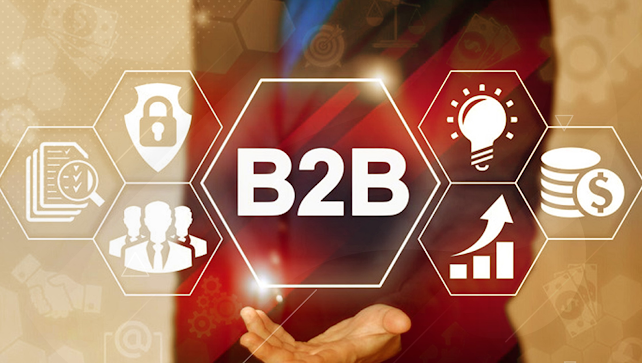
Regardless of their tactics, B2B marketing strategies function the same: they signal how to achieve a goal and allocate resources along the way. This means that the first step in any strategic journey is to define the ultimate goal. After all, marketing goals guide team members and allow team leaders to evaluate progress.
1. Influencer Marketing For B2B
Influencer marketing can be a powerful B2B marketing strategy in its own right. 84% of business decision makers initiate the purchasing process by seeking the opinions of industry experts and colleagues. B2B marketing teams can take advantage of this behavior by using an influencer marketing strategy.
You can start by identifying the suitable influencers in the market for you. These are not necessarily people with huge social media followers; rather, they should be people who see themselves as thought leaders. Targets called “micro-influencers” – professionals with under 10,000 followers on social media platforms are a good way to identify people with an established community and a high niche relevance for your target audience.

You can find influencers using Alexa's Audience Overlap tool. Start by entering the URL of a website that contains the audience you want to target into the tool. So you can contact site administrators to unlock opportunities for collaborative social media publishing, guest blogging, and even events.
2. Emotional Leadership Marketing for B2B
B2B marketing is often thought of as the unemotional territory, the place of numbers, and measurable results. But Google research has found that B2B buyers are almost 50% more likely to purchase a product or service in which they see personal value.
But the emotional factors behind B2B buying are different from those behind B2C buying. In B2B, purchasing decisions are often motivated by two forces:
Risk Aversion: B2B decision makers place high professional bets when making purchasing decisions. A decision that negatively impacts the bottom line can cost someone their job, or at least their personal status within the company.
Group Thinking: B2B decisions are made collectively. While combining executive expertise is sometimes helpful, it can also lead to groupthink when people strive for consensus rather than choosing the best option for the organization.
An emotion-focused marketing strategy can help marketers overcome these factors. This could mean a strong claim, such as a personalized referral program that connects existing and potential top customers, or IBM's mandate.
For example, the business software suite Zoho allows existing customers to earn commissions as Partners. These third-party routers provide personal reassurance to peers. This kind of tactic pays off. B2B companies with referral programs record a 70 percent higher conversion rate and 69 percent faster close time on sales than salespeople.

But for B2B, there is no emphasis on emotion-driven marketing, risk aversion, or groupthink. Consider the example of Xerox using emotionally positive paid ads to sell Real Rewards programs.
B2B marketing teams with an emotion-focused approach to strategy can take advantage of the often neglected psychological drivers behind B2B purchases. This strategy can give you an edge over competitors who only focus on selling with logic. Once you've identified relevant influencers, consider what kinds of marketing activities will be mutually beneficial for you and them. For example, webinars are often a good way to leverage an influencer's existing community and increase brand credibility within the group.
3. LinkedIn Marketing For B2B
B2B topics don't often go viral on Twitter or Instagram. But B2B digital marketing strategies can play an important role in your overall marketing plan. LinkedIn in particular has the potential to source a wealth of leads and traffic.

Professional networking is 277% more effective in B2B leads than Facebook and Twitter, with 64% of all social media visits to corporate websites. Marketers who choose a LinkedIn-focused digital marketing strategy can follow these three steps.
Identify Leads on LinkedIn
Proactively identify potential decision makers for your brand. LinkedIn offers Advanced Search features that allow you to filter profiles by company, industry, location, school, profile language, and nonprofit interests.
For teams using premium LinkedIn features, the Sales Explorer feature suggests potential leads based on your brand's attributes and integrates this information into your CRM.
Benefits of Not Building an Audience Using Showcase Pages on LinkedIn
Just like you create specific landing pages on your website to appeal to different audiences, Showcase Pages allow your brand to target specific customer segments within LinkedIn. Large, versatile companies like Salesforce have tons of Showcase Pages.
Marketing strategies help you achieve your B2B goals. B2B marketing comes with its own set of challenges, from risk-averse customers to abundant purchase cycles. Having an effective B2B marketing strategy helps overcome these barriers and builds marketing teams stronger sales paths forward. Without marketing strategies for B2B, your marketing goals can become dreams unfulfilled.












0 Comments